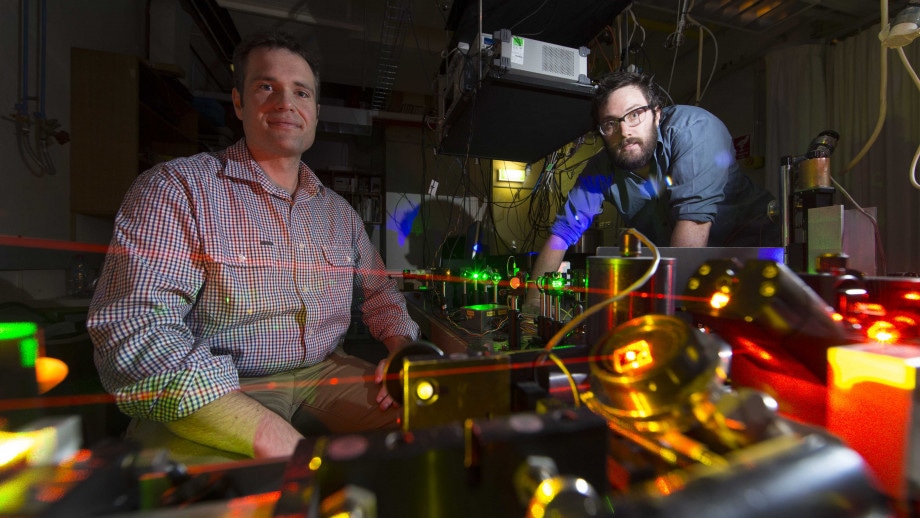Mar 9 2017
 Dr. Marcus Doherty and Ph.D. student Michael Barson in the laser lab at the ANU Research School of Physics and Engineering. Credit: Stuart Hay, ANU
Dr. Marcus Doherty and Ph.D. student Michael Barson in the laser lab at the ANU Research School of Physics and Engineering. Credit: Stuart Hay, ANU
A handheld device capable of using the power of MRI and mass spectrometry to execute a chemical analysis of objects has been designed by physicists. This new development was the outcome of the inspiration obtained by these physicists from the tricorder in Star Trek and the sonic screwdriver in Doctor Who.
The multi-purpose tricorder used in Star Trek provides an in depth analysis of living things, and the sonic screwdriver used in Doctor Who refers to a tool that has the potential to scan and identify matter, among various other functions.
Laboratories and hospitals will have the power to do full chemical analyses to solve complex problems with our device that they can afford and move around easily. This device is going to enable many people to use powerful instruments like molecular MRI machines and mass spectrometers much more readily.
Dr Doherty, ANU Research School of Physics and Engineering (RSPE)
Dr Doherty expressed that the new handheld device could be used by medical researchers to weigh and recognize proteins and other such complex molecules that drive diseases, such as cancer, and cures for those diseases.
"Every great advance for microscopy has driven scientific revolution," he said.
"Our invention will help to solve many complex problems in a wide range of areas, including medical, environmental and biosecurity research."
Molecular MRI is a type of the common medical imaging technology that has the potential to identify the chemical composition of every single molecule, while mass spectrometers are used for measuring the masses present within a sample.
Michael Barson, co-researcher, explained that the new device will be able to use small defects in a diamond in order to measure the chemical composition and mass of molecules with enhanced quantum techniques borrowed from gravitational wave detectors and atomic clocks.
For the mass spectrometry, when a molecule attaches to the diamond device, its mass changes, which changes the frequency, and we measure the change in frequency using the defects in the diamond. For the MRI, we are looking at how the magnetic fields in the molecule will influence the defects as well.
Mr Barson, a PhD student, RSPE
The research on this new handheld device has been published in Nano Letters.
Source: http://www.anu.edu.au/
ANU Physicists design a device inspired by sonic screwdriver